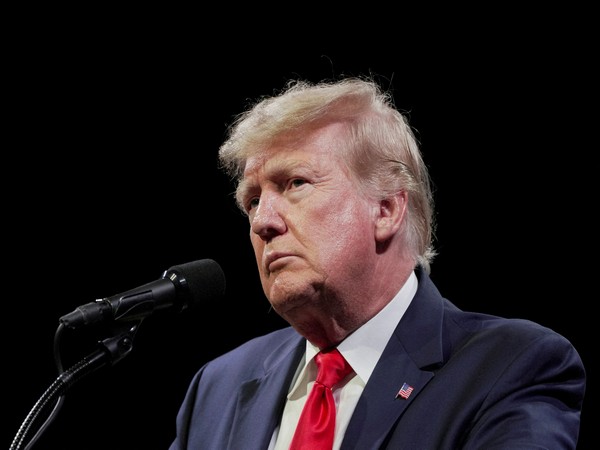
Former US President Donald Trump, widely known for his aggressive stance on trade, has again made waves by doubling tariffs on steel and aluminium imports, raising them from 25% to 50%. The announcement, made during a rally at a steel plant in West Mifflin, Pennsylvania, signals a renewed push to protect American industries as the 2024 trade war tensions re-emerge. The new tariffs, which take effect on Wednesday, June 4, are being pitched as a means to bolster domestic steel and aluminium manufacturing.
“Nobody’s going to get around that,” Trump told cheering workers at the rally. In a post on his social media platform Truth Social, he reinforced his message by declaring that America’s future infrastructure should be built with “the strength and the pride of Pittsburgh” rather than “shoddy steel from Shanghai.” Trump’s move has already begun to stir unease among allies and trading partners. The European Union quickly criticised the decision, warning of potential retaliatory measures and describing it as a setback to ongoing trade negotiations. Canada, a key supplier of steel and aluminium to the US, also slammed the decision.
Marty Warren, national director of the United Steelworkers in Canada, said the policy jeopardised Canadian jobs and amounted to “a direct attack” on its economy. Back home in the US, not everyone is cheering. Economists and industry experts have raised serious concerns over the broader implications of the hike. Felix Tintelnot, an economics professor at Duke University, said the tariffs could hurt several downstream industries such as automotive and construction that rely heavily on steel and aluminium. “Yes, it does help the domestic steel sector,” he noted, “but it’s hurting these other sectors of the economy, and they are already hard hit by other tariffs.”
Wayne Winegarden, a senior fellow at the Pacific Research Institute, also voiced his criticism, calling the tariffs “economically inconsistent.” He added that they could ultimately increase production costs for domestic manufacturers and burden consumers with higher prices. “It’s hiding under the cover of national security,” he said, “but it’s a policy that’s self-defeating.” The fallout is already being felt in India, one of the key exporters of metal goods to the US. The Global Trade Research Initiative (GTRI) estimates that the new 50% tariff will impact Indian metal exports worth \$4.56 billion.
This includes approximately \$587.5 million in iron and steel, \$3.1 billion in fabricated steel products, and around \$860 million in aluminium items. All of these are now likely to become less competitive in the American market. The timing could not be worse for Indian exporters, who are already navigating a difficult global trade environment. Pankaj Chadha, chairman of the Engineering Export Promotion Council (EEPC), warned that the engineering goods sector—which includes a significant portion of metal based exports—will be hit particularly hard. “This is not a bark, but a bite,” he said. “It creates deep uncertainty. How does one do business like this?” Ajay Sahai, director-general and CEO of the Federation of Indian Export Organisations (FIEO), called the development “extremely disturbing.”
He pointed out that not only will Indian exporters suffer, but American importers reliant on Indian goods will also face disruptions and cost increases. Beyond the economic costs, the tariff hike threatens to derail the delicate ongoing negotiations between India and the US over a long-discussed bilateral trade agreement. The unilateral nature of Trump’s decision has complicated the talks, according to trade observers. Chadha of EEPC added, “When BTA negotiations are still on the table, such steps make it much harder to move forward.” India has formally raised the issue at the World Trade Organization (WTO), indicating its intention to impose retaliatory tariffs. However, the US rejected India’s notice, arguing that its actions were not “safeguard measures” and therefore did not warrant formal discussions under WTO rules. This diplomatic impasse has only added to the uncertainty surrounding future trade relations between the two countries. Financial markets in India have already begun reacting to the announcement. On Monday, June 2, shares of major Indian metal companies—including JSW Steel, Tata Steel, Jindal Steel, and SAIL—recorded a sharp fall. The overall market took a hit, with the Sensex dropping by nearly 700 points and the Nifty falling by around 200 points, reflecting investor anxiety over the export outlook.
Trump’s strategy of aggressive tariff imposition is not new. During his earlier tenure, he used similar tactics on a wide range of goods and trading partners, both friendly and adversarial. Since returning to power in January, he has resumed this combative approach to international trade, causing unease among global markets and reigniting fears of a wider trade war. Supporters of the move argue that such measures are essential to restore America’s manufacturing strength and reduce dependence on foreign materials.
However, critics counter that tariffs alone cannot ensure industrial revival, especially when they come at the cost of global trade relationships and higher domestic prices. In the weeks ahead, the world will be watching to see whether Trump’s tariff gamble yields the industrial revival he promises—or whether it ends up undermining economic stability and trade cooperation across continents. For countries like India, which rely heavily on metal exports to the US, the stakes couldn’t be higher.
